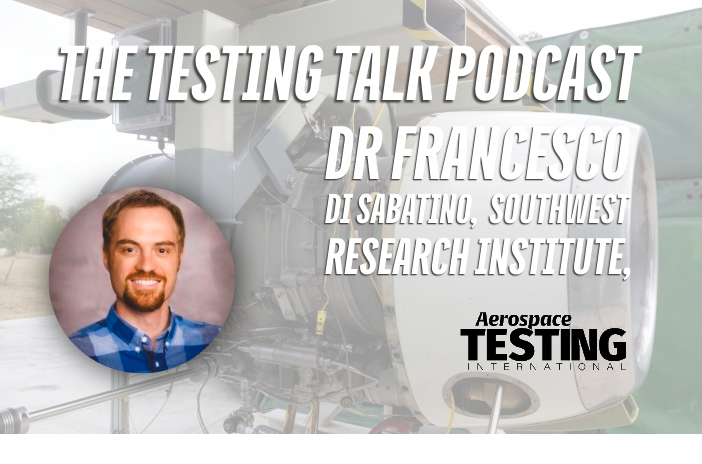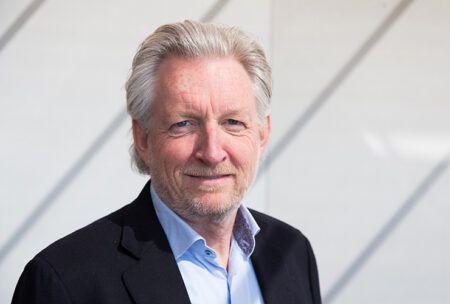In this edition of the ATI Testing Talk Podcast, Dr Francesco Di Sabatino, group leader of the Advanced Combustion for Power and Propulsion Group, Southwest Research Institute, tells me about a research project that he has overseen at SwRI that aims to fill a gap in knowledge about SAF by publicly releasing its test data.
Francesco hopes the data will help engineers working on SAF and could also lead to improvements to the fuel in the future.
Look out for the next episode of the Testing Talk podcast by subscribing in your favourite player.
Transcript
Ben Sampson: Hello, I’m Ben Sampson, editor of Aerospace Testing International, the world’s leading magazine dedicated to the application of testing, evaluation, and inspection in the aerospace industry.
Welcome to this episode of the Testing Talk Podcast from ATI
Sustainable aviation fuel SAF has risen up many people’s agenda’s again in aviation – as the number one way to reduce the sector’s emissions. I thought it would be a good time to speak to an expert about SAF from a technical point of view.
Francesco di Sabatino, who is a group leader in the Combustion for Power and Propulsion Group at the Southwest Research Institute is that expert. He and his researchers have just completed a test program comparing the performance and emissions of SAF, efuel and Jet A to each other, and plan to make the results public.
He has some early insights to share from the comparison and some thoughts on how we could enhance SAF to make it more appealing to aircraft operators that I think you will find interesting.
So now – wherever you are and whatever you are doing – it’s time to listen back to my interview with Francesco di Sabatino from the Southwest Research Institute.
—-
Ben: Hello. I’m here today with Francesco Di Sabatino, who is from SWRI in Texas. Thanks for joining me today, Francesco. What’s the weather like in Texas? I bet it’s warm and sunny.
Francesco: Hello, Ben. Thanks. Thanks for having me. Yeah, yeah, it’s still kind of sunny, a little bit chill in the morning, We’re expecting a little bit of cold weather. but it’s getting very nice.
Ben: Great. We’re here to talk today about a project that you’ve recently done for SWRI, a research project. First, could you just tell me a little bit about yourself and about SWRI? Where the company sits? What it does? What you do for them?
Francesco: Sure. So I am a group leader here at Southwest Research Institute. I lead the Advanced Combustion for Power and Propulsion group. As the name says, we do a lot of stuff related to power and propulsion, mainly in the field of combustion. Southwest Research Institute is a non-profit organization, a research institution that’s been around for more than seventy years, always here in San Antonio. That is kind of in the center of Texas, more or less.
Southwest really does everything from deep sea to deep space. This is our model really. So we develop submersibles for the for the Navy, I believe, as well as spacecraft for NASA. Combustion is just a part of all this stuff. We really do a lot of a lot of different things.
And Southwest Research Institute lives in what we call the Valley of Death. So from TRL seven to eight. We help our clients to develop a product or we develop products for our clients to bring to commercialization. We do not sell any products. We do research for clients or the government.
Ben: So you’re not really blue skies research so much. It’s more research and testing which is closer to industry. Right?
Francesco: Correct. Although, we do have a very small part of our Institute that does basic research or science. But we mostly work with industry. Yes.
Ben: And now you’ve recently done a project about sustainable aviation fuel, which compared it to, e-fuels and normal jet fuel. Can you just talk me through that, what you did and why you did it? What you were trying to find out?
Francesco: Sure. So I’ve been exposed to sustainable aviation fuel before joining Southwest Research Institute, and I wanted to continue that research here as well, mainly because it showed me that there is a lot of like work that has to be done on SAF, right?
There are companies producing SAF, but the amount of information available in the literature is very limited. Mainly because all these companies are very protective of their products. So for engine testing the data available is very, very limited because lots of large OEMs don’t really want to share.
So the overarching idea was really to try to produce a data set that could be used by everybody in the world, to maybe help them develop new fuels. Or if they’re working on engine testing, as a starting point for that. When I started looking inside our Institute at who was working on SAF, I found groups working on SAF production as well as characterization, like for ASTM certification. I put together all these people to try to develop a project to produce a very complete data set to release to the public.
And that’s what we’ve achieved. We produced our own SAF that we then blended with Jet A and we characterized this blend. Plus we characterized commercially available SAF as well as commercially available Jet A, then we tested all three fuels in our jet engine. We measured engine performance and emissions, both gaseous and particulate. We noticed some interesting stuff, that will be published very soon in a paper. But again, the focus really is on producing a data set that can be used by anyone.
Ben: So you identified a lack of data and knowledge about SAF within industry, and you’ve attempted to fill that gap by producing your own fuels and then testing them all in-house. Right?
Francesco: Yes.
Ben: Okay. Fantastic. Alright. So can you tell me a little bit more about the production? Let’s talk about the testing in a moment, I mean, we’re interested in the results. But producing that amount of fuel, how did you go about that? You’re producing SAF and e-fuel, which is fuel from water, isn’t it? Using electrolysis?
Francesco: It can be, there can be a lot of different sources. So unfortunately, I cannot really talk about that technology because its proprietary, but I can guide you through the steps that we followed.
To start with we got a feedstock from a client that generously dontated it. Even getting a feedstock is not simple. It’s not something you can find online, for example, It’s very rare. Then we, hydrotreated that feedstock. And we produce liquid fuel out of that. We add the hydrogen and heat, and we have a Catalytic process. All of these remove the impurities of oxygen and other things that can be in the original feedstock.
After that we do isomerization. We try to improve the quality of the fuel. Because whatever you get from the first step is not the right quality. These processes improve quality until you get to the distillation, and that’s where you actually get the kind of quality that you need for putting it into a jet engine.
So that’s the process we followed. And, let me tell you it’s not a cheap process. Especially if you do it on a small scale. It’s expensive
Ben: Yeah, that was my question there, actually. But do you need a lot of fuel to do this?
Francesco: No, we don’t need a lot. We can do tests in our system with less than a barrel of fuel. So, fifty-five gallons, fifty gallons. So we didn’t have to produce a lot. Our blend ended up being around 15%, and 85% Jet A. So we didn’t really need a lot, but even that small amount was quite expensive because, we’re not producing the fuel at scale. We do have that capability. But we’re not doing it for that project. But, yeah, if you produce a small scale, it’s usually expensive.
Ben: So let’s talk a bit about the testing. I mean how did you do the testing? What tests did you put the different fuels through? How how did you ensure that you could compare the data sets from each fuel?
Francesco: Yes. So of course there are many ways that you can do these tests. We investigated different ways and had to settle with the one that was feasible for us. It might not be the best way of comparing the fuels, but that was working for us.
So the reality was that we were comparing different engine throttle conditions, so fixed throttle and just seeing how the engine does with the different fuels. Again there are other ways. This was the way we decided due to several limitations with our system.
We tested the three fuels one after the other. After each test we actually purge all the lines and try to purge the lines inside the engines with nitrogen as well as. We measured engine performance based on air flow rate through the engine, the rotational speeds of the compressor and turbine and pressure and temperature along the engines such as compressor discharge, turbine inlet and turbine outlet temperature, things like that.
We also measured gaseous emissions in terms of CO, CO2, oxygen, if you want to call that an emission, and NOx and sulfur oxides. We also measured particulate matter, volatile and non-volatile, specifically soot. and we also did a quite interesting analysis of soot particles. We put the soot particles we collected on specific filters then analyzed them with a scanning electron microscope. So we could go very into the details of the particulate and try to see exactly what the particulate looks like. Such as if there are any kinds of other components on the surface of the particle. So that’s what we’re done for testing.
Ben: What was the trickiest part? I mean, what was the cleverest part of the test to set up? Because you’ve got an engine running on a stand, right? A jet engine in the lab. Okay. And then, I mean, what was the trickiest part to get right or measure?
Francesco: Yes. I would say one thing was trying to get similar humidity levels, because humidity swings quite a lot here in Texas. But also trying to collect the exhaust gases very close to the engine was tricky for material compatibility. The gases were very hot as we were trying to collect them from the engine core and not from the dilution. So, to really have whatever was coming out from the combustor. And for that, we had to kind of design a custom-made probe that we installed just outside the engine.
Ben: Okay. So what? what did you find out ? Was there any differences or anything that surprised you between the emissions of each type of fuel?
Francesco: Honestly, lots of them were expected. So in terms of engine performance, we didn’t see substantial differences between the fuels. But again, that was expected because SAF blends are designed to be dropped in, so are designed to be somewhat similar to jet fuel.
What we observed in terms of emission was that sulfur emissions were much, much smaller compared to Jet A. That was kind of expected because the sulfur in the fuel comes from oil. So it’s present in the process to get jet fuel. while that’s not the case for SAF, right? There’s no sulfur to begin with, so sulfur levels to begin with in the fuel were very limited.
Another thing we observed is that soot particles where substantially less than expected, because the aromatics content was less for the SAF. We observed different, NOx emissions. That was somewhat unexpected. We are still working on trying to understand why that was the case. But we observed substantial difference between NOx, Jet A and SAF. So that’s a very interesting result, and we are still investigating why that is the case.
Unfortunately, our system didn’t have a lot of access to the actual combustion process, because it happens inside the engine. So we are we have limited information about what is going on with the combustion itself, where the NOx is formed. So that’s why it’s taking a little longer to understand why we have these differences in NOx.
Ben: You had an e-fuel you were testing as well. Are you describing the e-fuel as SAF? And was there any differences between the fuel that you made?
Francesco: So compared to the commercially available stuff that we bought on the market, there was some small differences. But the end product is very similar. Right? It’s not like we are getting something that is jet fuel like, it is jet fuel. So we were not expecting a substantial difference.
Ben: So in terms of the composition of this fuel and the composition of the emissions and particulates that you’re getting. You’re really just seeing environmental benefits at this level.
Francesco: Correct. But I would say I want to add one thing. I think here we really have a kind of an opportunity. Right. Because right now we are trying to create SAF to be exactly like jet fuel. But we practically have full control on the composition of the fuel. So why not produce this fuel in such a way that can enhance the performance of the engine? Maybe you will end up with like less fuel consumption. So overall you get lower emissions and more efficiency. I know that this is may not possible at the moment for safety reasons. but there is an opportunity here and I think, we should look at that in the future and say, okay, maybe we should move away from trying to be exactly the same as a Jet A and try to generate a fuel that has better performance.
Ben: How might you do that?
Francesco: I mean, you can definitely control the chemical composition of your fuel, right? So you can change the performance and fuel is composed by major components such as alkanes, aromatics. I’m not a chemical engineer but I’m somewhat familiar with that. You can change the relative percentages to get better performance. However, we’re probably like several years, maybe decades away from that. But I just want to highlight that, we are looking into making something that is same as Jet A, but maybe we should look at something that is better than Jet A.
Ben: So will you be doing any follow up studies or research ?
Francesco: So yes, we will. I cannot really talk about the details, but we have follow-up studies next year, 2026. And we are also establishing a more structured program here at Southwest to keep working on stuff like this all together. The various groups that participated will maybe in the future be organizing a workshop here on site, and try to bring people from the various aspects of SAF, like production, characterization and testing on site, put them in the same room and try to come up with good results there.
Ben: So what’s the main message? The main implication? That you would say there is no real difference between these types of fuels for airplane operators?
Francesco: In terms of performance yes, there is no main differences. Right. But that’s by design, right? That’s how the SAF has been designed in past years in terms of mission. There is a difference for the environment, right? So we definitely should keep pushing them. I think I forgot to mention, we don’t have an explanation for this at the moment, but also the smell of burning stuff and burning Jet A was different. There was much less smell from burning it than burning Jet A. So that’s also a good thing for the airport, and for whoever lives around the airport.
But the message here is really, we need to keep working on stuff. We need to keep developing data sets that can be used by everybody. I’m really advocating for sharing data, because to me, that’s the only way of getting to a point that you can demonstrate that this stuff is valuable and it gives less emissions. So it’s good for everybody.
Ben: Thanks, Francesco. It’s a really interesting study, and I’m pleased we’ve been able to catch up about it. I just got a one or two final questions really about the more general landscape of the industry.
Francesco: Yeah,
Ben: There’s some tough questions that perhaps are beyond me and you answering over the next couple of minutes at least. But I just wouldn’t mind your thoughts on them if that’s okay. I mean there are some barriers to the introduction of SAF, that aren’t perhaps engineering-related. I mean, I’m talking here mainly about the cost and incentives to scale up. Do you see SAF in general for the industry as a practical way to reduce emissions? Do you think it’s a good idea that we can do?
Francesco: Yes. I think we should look at all technologies, and see which one is the most valuable.
From my experience SAF seems to be the only way right now. The other options, for example, hydrogen dibt seems to be very feasible at this stage. SAF is exactly the same as Jet A, and we know how to use Jet A. We know how to handle SAF, so it seems to be the way.
However, in my opinion, we need to create a market for SAF and the market is not really there yet. That’s one of the reasons why the price of it is very high. Even getting a new production facility is extremely expensive. If there is no market for the SAF its because we’re not creating it, then there’s no way we’re going to use it. The market can be created by incentives from the government. For example in Europe there are mandates for that. That’s one way. But without a market for SAF it’s going to stay too expensive and airlines won’t be able to afford it. If they are able to afford it, then the customer will have to pay for it. And I don’t know if people are willing to pay maybe two or three times the cost of the ticket for SAF.
Ben: So going back to what you just said about at the moment we’re trying to match as a drop in fuel. Do you think there’s real scope to make SAF even better than jet fuel? You know, that could be a way to tempt people to use it.
Francesco: Yes. That could be one way. Sure. I think that’s, that’s a good idea. However again because of the cost it probably won’t be competitive anyway. So again I think it’s good to make it. But we should make it better. But we should also think about the cost of making it.
Ben: Just finally, do you think there’s any, you mentioned some of the ASTM standards that you were working towards. And do you think do you think there’s anything different that they could do to help it?
Francesco: I know. I think it’s very difficult. Because safety is paramount. There’s nothing more important than safety for an aircraft. And that’s sticking for a very long time. So the industry has been risk averse since it was born. So I think the combination of all these things makes things go slowly, but maybe it’s a good thing they are going slowly, right? Because then we are sure that we’re going to get a product that is safe and can be used properly. But this safety also comes with this cost. So again, it’s all about balance with these factors.
Ben: But studies like yours help to increase awareness that the fuel can be used and is harmless in aircraft. And, well, it’s harmless in aircraft and with environmental benefits beyond normal jet fuel.
Francesco: Yes, correct. That’s my idea as well. Right. To just to show the benefits, to show this with real measurements, proper measurement that shows the emissions are less with the same performance. That’s one of the main goals of the project.
Ben: So will the data be freely available at some point?
Francesco: Yes. It’s going to be open source. As soon as the paper is published. We are going to also publish it on our website and all the other things. So people, will we have free access to it.
Ben: You know what? That will be not to put pressure on you.
Francesco: Yeah it’s a very large paper. So it takes time.
Ben: All right. Great. Okay. Well, Francesca, thank you again for your time and talking me through the project that you’ve just done. It’s very interesting. I’m sure our listeners or our readers will find it very interesting, too. So. Yeah. Great. Bye
Francesco: Thank you.
Ben: Bye.
—-
Ben: I hope you enjoyed this conversation with Francesco Di Sabatino, a group leader in the Combustion for Power and Propulsion Group at the Southwest Research Institute
Join us again soon for another episode of the Testing Talk from ATI. In the meantime stay in touch with us at aerospacetestinginternational.com, on LinkedIn and via this podcast. That’s it from me – until next time.





